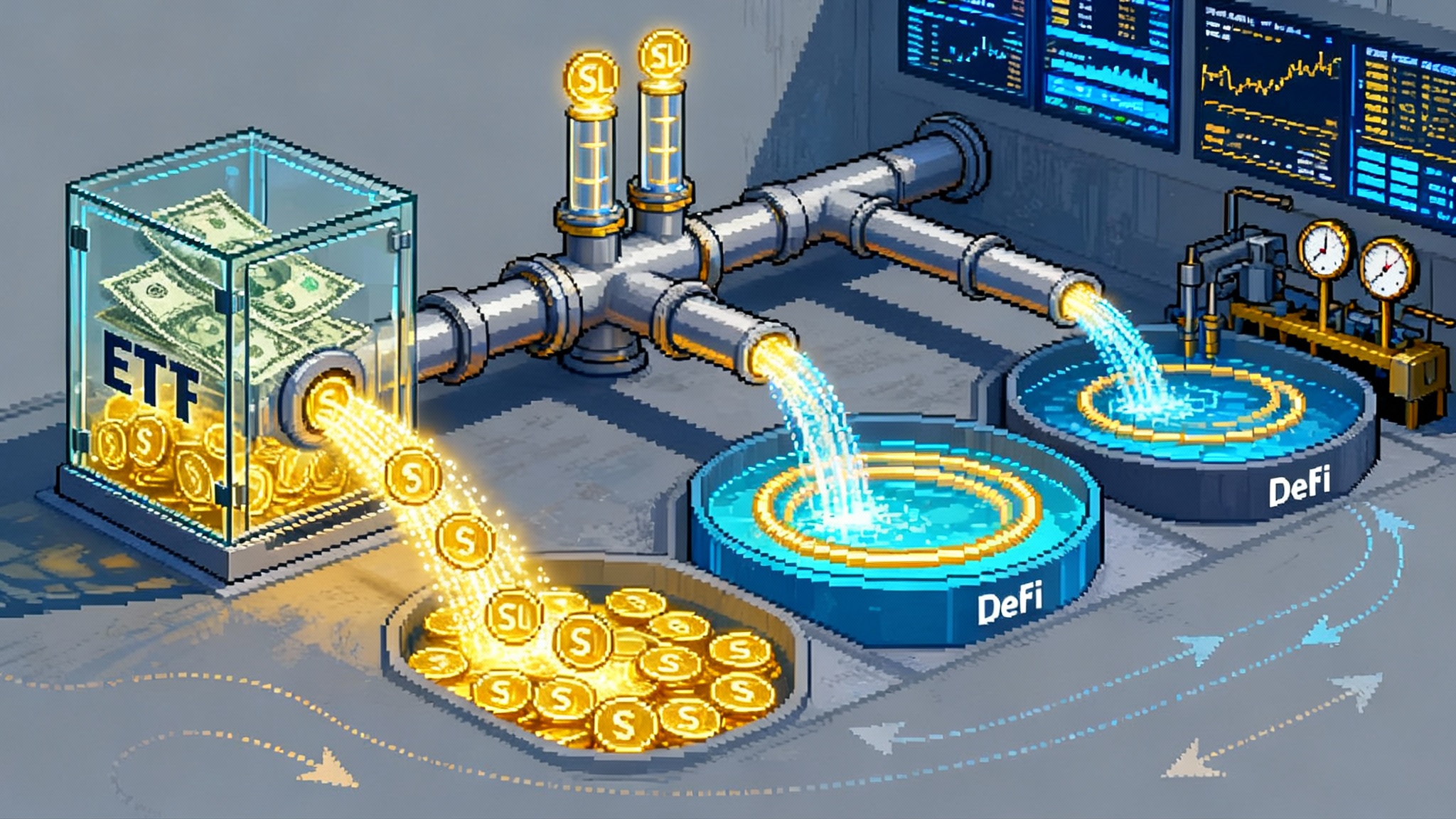GENIUS Act Is Law: The 18-Month Race to U.S.-Licensed Stablecoins
Signed on July 18, 2025, the GENIUS Act gives stablecoins a federal rulebook with 1:1 reserves, monthly disclosures, a state and federal licensing split, and clear AML expectations. Here is what changes, the activation timeline, and a builder playbook to ship before the law takes effect.

Stablecoins now have a U.S. rulebook
On July 18, 2025, the President signed the GENIUS Act into law, the first federal framework for dollar-pegged stablecoins. The White House called out core consumer safeguards and national security goals, including 100 percent reserves, monthly disclosures, and strong anti-money laundering programs in the White House GENIUS Act fact sheet. The headline is simple: to issue or widely sell a payment stablecoin in the United States, you will need a license and you will need real dollars or short-duration Treasuries sitting behind every token.
Imagine a prepaid gift card that always and instantly converts back to a dollar at the service desk. GENIUS is Congress telling every issuer to keep the drawer full of cash and Treasury bills, publish a receipt every month, and be ready to show the drawer on demand. That clarity is the bridge from crypto plumbing to everyday payments.
What the law actually does, in plain English
Here are the parts that matter for anyone issuing, listing, or using stablecoins in the United States:
-
1:1 reserves with safe assets. Issuers must hold at least one dollar of permitted reserves for every one dollar of stablecoins outstanding. Permitted reserves include cash, deposits at insured banks and credit unions, short-dated U.S. Treasury bills, certain repurchase agreements backed by Treasuries, and similar low-risk instruments.
-
Monthly public disclosures. Issuers must publish monthly, plain-language breakdowns of their reserves. Think of it as a recurring balance sheet for token holders: how much is in cash, how much in Treasury bills, how much in repos.
-
Licensing split between Washington and the states. The law creates two lanes of permitted payment stablecoin issuers. Smaller or state-focused issuers can operate under a state charter if their home state’s regime is certified as substantially similar to the federal standards. Very large issuers must come under joint federal supervision once their outstanding coins exceed a defined threshold.
-
Anti-money laundering and sanctions controls. Issuers are explicitly subject to the Bank Secrecy Act, which means robust AML and KYC programs, risk assessments, customer identification, sanctions screening, and recordkeeping that can stand up in an examination.
-
Lawful freeze and burn capabilities. Issuers must have the technical ability to comply with lawful orders to seize, freeze, or burn payment stablecoins.
-
Marketing and insolvency rules. The law bars misleading claims that a stablecoin is legal tender or government guaranteed. If an issuer fails, stablecoin holders are prioritized in the claims stack so customers are first in line to get their dollars back.
Two design choices are worth underlining. First, the act defines a payment stablecoin around redemption at a set amount, which keeps the focus on dollar-like instruments used for payments and settlement, not investment tokens. Second, the act leans on bank-style supervision for the largest issuers without turning every issuer into a full-service bank.
The activation timeline and the 2025 rulemaking sprint
GENIUS turns on the earlier of two dates: 18 months after enactment or 120 days after final regulations. Eighteen months from July 18, 2025 lands on January 18, 2027. If regulators finish faster and publish final rules, the law can start even earlier. The statute also gives agencies up to one year from enactment to write the implementing rules, which is why the fall 2025 calendar will be dense with proposals, comment periods, and technical workshops. The authoritative language and dates are in the Congress.gov bill text for S.1582.
Service providers get a longer runway. Beginning three years after enactment, digital asset platforms operating in the United States will be barred from offering or selling payment stablecoins that are not issued by permitted issuers. That puts a July 18, 2028 sunset on unlicensed stablecoins in U.S. retail and institutional channels. There is also a safe harbor for firms with applications already pending, which can give up to 12 months of relief after the law’s effective date.
States have homework too. A new certification process validates which state regimes are substantially similar to the federal framework. Expect the first wave of certifications to cluster around states with existing digital asset supervision programs. The largest issuers cross a threshold that triggers joint supervision with a federal banking agency, ensuring consistent standards for firms whose coins are used nationally or globally.
Who wins and who loses
-
Banks vs fintech issuers. Banks arrive with compliance DNA and exam-tested risk teams. If a large bank or its subsidiary chooses to issue a stablecoin, the path through supervision is familiar. Fintech issuers are not shut out. The likely near-term shape is a partnership economy: fintechs issue coins and run smart contracts, while banks provide custody, cash management, and access to overnight liquidity.
-
Circle’s USDC and PayPal’s PYUSD. Circle has spent years publishing reserve attestations and investing in compliance. Under GENIUS, that translates into a clear path to become a permitted issuer. PayPal can take a similar path for PYUSD through its banking and money services footprint. Once licensed, these coins obtain what merchants and payroll teams care about: predictably fast settlement, regulatory clarity, and bank-grade operational standards. Expect payment networks to test merchant pilots, a trend we covered in Visa and Stripe stablecoin rails.
-
Tether’s U.S. footprint. The law does not ban foreign issuers, but it forces a choice. To be offered in the United States through regulated platforms, a foreign issuer must register, meet the reserve, disclosure, and compliance obligations, and demonstrate the ability to honor lawful orders. If a foreign issuer refuses or falls short, U.S. platforms will be required to restrict secondary trading after notice.
-
Merchants and consumers. Fees should compress. If a retailer can settle a day’s sales into dollars backed by Treasury bills in near real time, with fraud tools, chargeback rules, and clear compliance expectations, that is a payment rail worth integrating. Distribution through consumer superapps will matter, as seen with USDT in Telegram mini apps.
Why this channels trillions into short-duration Treasuries and tokenized assets
Reserves are not a side note; they are the engine. Under 1:1 requirements and strict lists of permitted assets, stablecoin reserves will migrate to cash and very short-duration Treasuries. Consider a back-of-the-envelope scenario. If U.S.-licensed stablecoins grow from a few hundred billion dollars today to one trillion dollars by the end of the decade, and if two thirds of those reserves sit in Treasury bills, that is roughly 650 billion dollars of steady demand for the shortest end of the curve. At two trillion dollars of stablecoins, it is well over a trillion dollars of demand. That is not a rounding error for Treasury markets.
This reserve gravity spills into tokenized real world assets. If issuers can hold Treasury bills and repos, they will seek operational efficiency. That points to tokenized money market funds, tokenized Treasury bills, and onchain repo. Once those instruments are standard inside issuer treasuries, corporate treasurers will copy the playbook for working capital and overnight cash management.
How the U.S. now stacks up to Europe and Asia
Europe’s Markets in Crypto Assets regulation, often called MiCA, went live for stablecoins in 2024. MiCA separates asset-referenced tokens from e-money tokens, requires authorization for issuers, imposes 1:1 reserves and governance standards, and gives the European Banking Authority special oversight for significant issuers. It also caps daily transaction volumes for large non-euro stablecoins in the European Union, nudging usage toward euro-denominated tokens. The European model is centralized at the union level with passporting across member states.
Singapore’s Monetary Authority has issued a stablecoin framework that requires single-currency stablecoins to be fully backed with high-quality liquid assets, with monthly attestations and clear redemption rights. Japan amended its Payment Services Act to permit yen-referenced stablecoins through licensed intermediaries, with banks expected to be the primary issuers. Hong Kong has been moving toward a licensing regime for fiat-referenced stablecoins, coordinating between its securities and monetary authorities.
Against that backdrop, GENIUS gives the United States something different: a dual state and federal model with hard reserve rules and a defined lane for very large issuers to move under federal supervision. Europe emphasizes a single passport; the United States leverages its bank supervisory system. Singapore and Japan push issuance into bank perimeters; the United States allows purpose-built stablecoin entities but makes them look and feel like banks in the areas that matter.
For global firms, the competitive dynamic is clear. If you can meet MiCA’s standards and GENIUS standards, you can serve Europe and the United States with the same core treasury, audit, and compliance stack, adjusting for local reporting.
The builder’s playbook for 2025 to 2027
The winners in the next 18 to 30 months will act as if the law is already effective while using the transition period to lock in advantages. Here is a concrete plan.
- Compliance-by-design wallets
- Build native controls for AML and KYC workflows. Use modular identity, not a simple upload box. Support reusable verified credentials so users can prove what is needed without oversharing.
- Integrate sanctions screening and suspicious activity triggers at the wallet level. Provide an evidence locker that preserves the minimal data needed to satisfy an examiner while respecting user privacy.
- Add lawful freeze hooks into token contracts for the issuers you integrate. Make the freeze pathway auditable and gated by verifiable legal orders.
- Offer clear redemption flows. If a user holds a licensed coin, the wallet should automate redemption so the user can always get dollars back to a bank account in one business day or less.
- Merchant settlement rails
- Ship an SDK that lets payment facilitators accept licensed stablecoins and settle to merchant bank accounts or to stablecoin treasury accounts at fixed windows. Abstract chain choice. Merchants care about certainty, not gas fees.
- Build reconciliation that mirrors today’s card statements. Daily batch summaries, refund codes, and dispute rails that map to existing ERP fields will speed up adoption.
- Price it simply. Interchange-like pricing is familiar. If you can offer lower all-in costs than cards for online transactions, merchants will test in weeks, not months. See the adoption path in Visa and Stripe stablecoin rails.
- Onchain payroll and commerce
- Run payroll in licensed stablecoins with automatic tax withholding, employer tax accruals, and file-ready reports. Add instant earned wage access for hourly workers with guardrails.
- Support accounts payable in stablecoin with automated invoice capture and payment terms. Offer working capital lines collateralized by receivables and backed by tokenized Treasury bill inventories.
- DeFi listings limited to permitted issuers
- Curate pools and markets so that only permitted issuers’ stablecoins are eligible. Publish a public allowlist with reasons and a delisting process tied to regulatory notices.
- Add built-in circuit breakers for stablecoin pools. If an issuer’s monthly disclosure shows a material reserve change, pause new deposits for 24 hours while governance reviews. For DEX teams shipping new primitives like Uniswap v4 hooks and Unichain, enforcing allowlists at the hook layer will speed audits.
- Interoperability and chain strategy
- Assume multi-chain. Integrate messaging standards and canonical bridges that issuers support. Avoid bespoke bridges that will not survive an audit.
- Prefer tokens with transparent attestation oracles and clear, upgradable contracts subject to change control. Auditors and regulators will ask how upgrades are approved and how key material is protected.
- Communications and trust
- Write a plain-English explainer for your users about what licensed means. Explain reserves, disclosures, and redemption rights. Put the monthly reserve links in-app.
- Publish an incident response plan that describes how you honor lawful orders while protecting user rights. Show the forms, not just the slogans.
The big picture
The GENIUS Act aligns incentives. Issuers get a path to legitimacy if they hold safe reserves and open their books. Banks get to participate with rules they know. Merchants get cheaper, faster settlement with simple reconciliation. Consumers get dollar tokens that behave like dollars. Regulators get measurability, audit trails, and the ability to act quickly when something goes wrong.
By early 2027, if agencies hit their deadlines and industry executes, stablecoins will no longer feel like a crypto niche. They will sit behind checkout buttons, payroll files, and vendor invoices, moving with the reliability of card networks and the finality of bank wires. The transition will be the quiet click of software updates and new buttons in finance dashboards.








